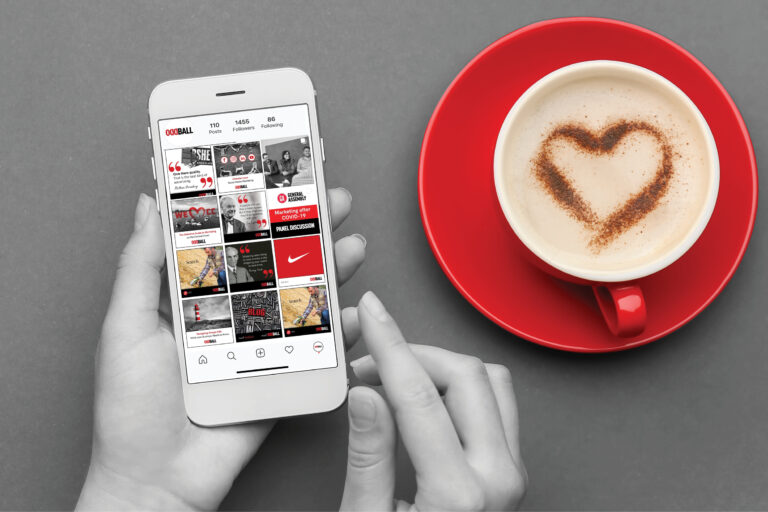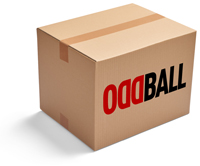Have you heard that old saying, “Fail to plan, plan to fail?” When it comes to marketing, never has a truer word been spoken.
All too often we see businesses continually invest their time and money into various marketing campaigns and ideas, but because they’ve not been created as part of a bigger picture strategy the results are continually disappointing, and consequently the business doesn’t achieve the growth it wants and needs.
By taking the time however, to create a holistic plan that takes into account all elements of your business and market, the ending of the story will be a lot happier.
What does an effective marketing plan look like?
We’re pleased you asked! You can actually download a free copy of our Oddball Marketing Game Plan here.
We’ve compiled the most important components of an effective marketing strategy into this one template, so you can make informed decisions about your marketing activities and create an intelligent plan that simultaneously serves your customers and your business goals.
That’s right – everyone’s a winner!
So in this article we’re going to talk you through each component of the plan, so you can understand its importance and how to get the most out of it.
Please note that this is a high level plan. The purpose is to get an in-depth overview of your business, market and customers, and create specific strategies based on that. So you can then go and break them down into key actions for you and your team.
Let’s get on with it then, shall we!
Section One: Our Business
Business Goals
As we’re sure you’ll agree, any activity that happens in business should always contribute to the achievement of your business goals – whether that’s directly in terms of making more revenue, or indirectly through improving team culture or customer experience.
So naturally, you must ensure that all your marketing activities are driven by your business goals.
Get started by defining what you want to achieve in the next 1 and 3 years, and how you’ll measure your success. Be as specific as you can – if you don’t know where you’re going, how will you know when you get there!
So for example: “Get more customers” or “More profit” won’t cut it. A large aspect of marketing is numbers and analytics, so in order to be successful you must make it as quantifiable as possible.
E.g. “Increase customer base by 50%” or “Increase profit margin to 45%” will work much better. That way you can set your individual marketing KPIs according to these numbers.
Brand Identity
It’s important to ensure that whatever marketing you do, it’s always inline with who you are and what you stand for. This will ensure you maintain brand integrity and consistency, making it easier to continually build trust and loyalty amongst your audience and customers.
Who are we: Dig deep into the purpose of your business and brand. Why do you exist? What are you on this planet to do? Find the emotional need you fulfil for your customers. This should be at the core of all your marketing.
What do we stand for: What is most important to you and your business? What are your non-negotiables – the things that drive you at your core? Again, this must resonate throughout everything you do. In fact, it will help to guide a lot of your decision making.
What do we want to be known for: How do you want others to perceive you? What do you want them to think, feel and say about you?
Section Two: Our Market
It’s important to know who else is trying to get the attention of your audience, what strategies they’re using to do so, and indeed if those strategies are producing the desired effect.
Remember not to get too caught up in what your competitors are doing however, as this can lead to actions that are not aligned with your goals, brand and values. Rather, concentrate on what makes you and your product/service unique, and how this directly benefits your customer.
Section Three: Our Customer
This is quite possibly the most important section, and one that is all too often breezed over. Intimately understanding your customers, and more critically they’re thought and behaviour patterns, will set you miles apart from anyone who even slightly resembles competition.
You see, people’s decisions and actions are always driven by emotion (they reason with logic). Their motivation is always to overcome a problem and make their lives easier or better in some way. So if you speak to them at this level, you’ll be speaking directly to the part of their brain that drives their buying behaviour.
This will set you up as the hero in their story of struggle, to move away from pain and problems towards their goals and desires. They will feel like you totally understand them and are invested in their success (because you are) – meaning they will trust you and be more willing to put their faith in your brand and offerings.
When you market to your customers in this way, you do not have to “sell to them” – purchasing your product or service simply becomes a natural progression of their journey.
Section Four: Marketing Goals
Now you’ve defined and clarified who you are and how your customers roll, you’re ready to start creating your marketing plan.
Begin by defining the higher level areas of focus for this current time period, and of course how you’ll measure their success. For example:
- Social Media Marketing: Increase engagement by 50% and conversions from paid campaigns by 50%
- Email Marketing: Increase database to 5000 subscribers and click rate to 5%
- Website: Increase visitors by 100%
Always remember to ask yourself throughout this process:
- Will this take us towards our business goals?
- Will it allow us to stay true to who we are and what we stand for?
- Will this reach and engage our target audience on an emotional level, and is it relevant to their wants and needs?
Section Five: Buyer’s Journey
Although you understand your customers problems and needs, it’s critical to understand where they’re at in their journey with them so you can communicate effectively.
i.e. If they’ve only just become aware of their problem, it’s unlikely they’ll be ready to buy. They need to learn more about the specifics of their problem and possible solutions before their emotional brain feels safe enough to take action.
So hitting them with a Facebook Ad telling them how great your product or service is, will likely fall on deaf ears at this stage of their journey (and therefore make inefficient use of your time and money). A better investment would be educational content that provides the answers they’re looking for and moves them along their journey.
Please note however, it’s possible for a person to move back and forth through the buyer’s journey. This is why it’s important to define strategies for each stage and create a multi-channel marketing strategy, so you can speak to their emotional brain at every step.
Section Six: Channel Activities
Now it’s time to get even more specific and break down everything you’ve done so far into practical actions for yourself and your team.
As you did before, keep checking in with your goals, brand and audience to ensure every activity you do has purpose, and will therefore give you the greatest return on your investment.
The Final Step
Do it!
Delegate all the tasks where appropriate and schedule the key milestones, so you can regularly check in, track your success and adjust accordingly.
May the force be with you!






